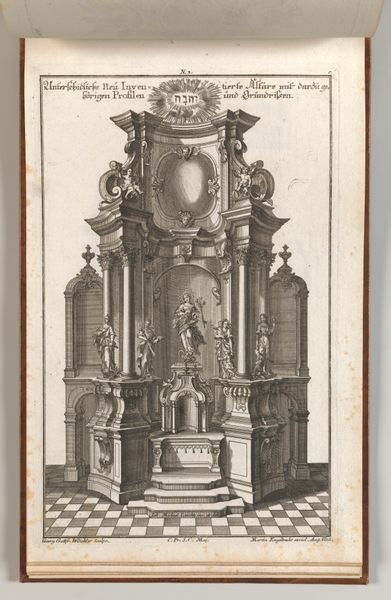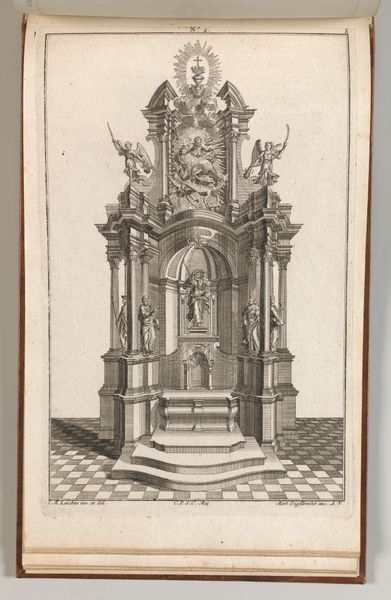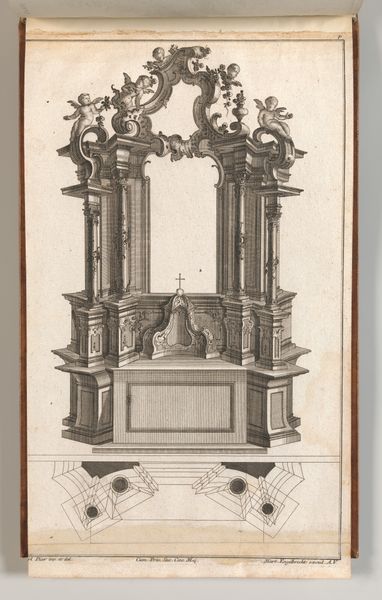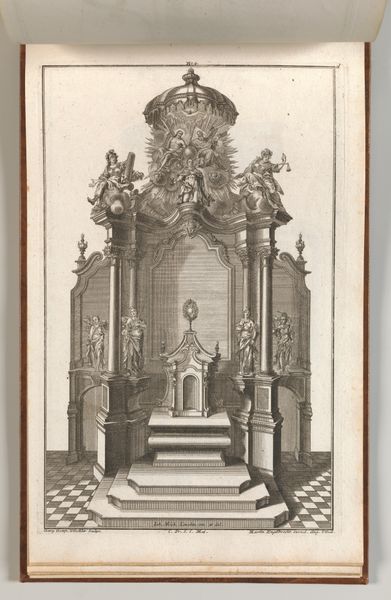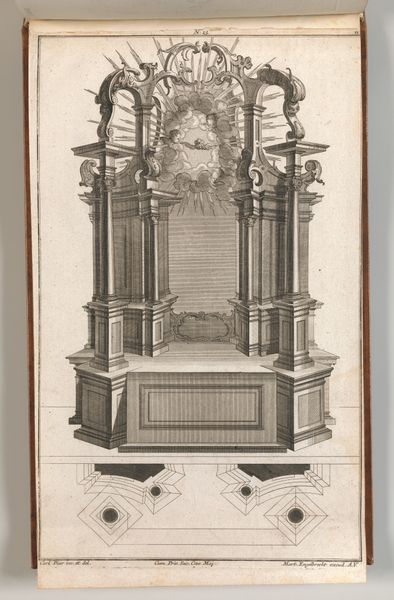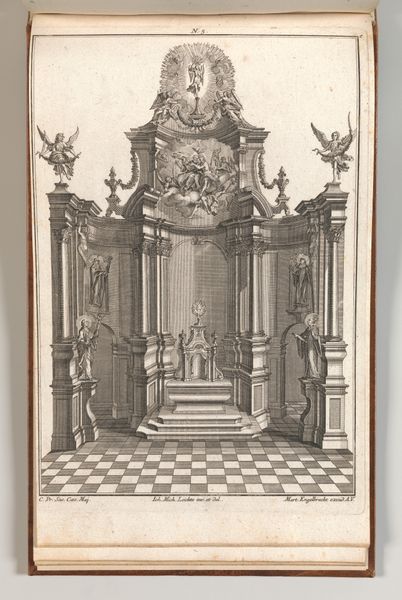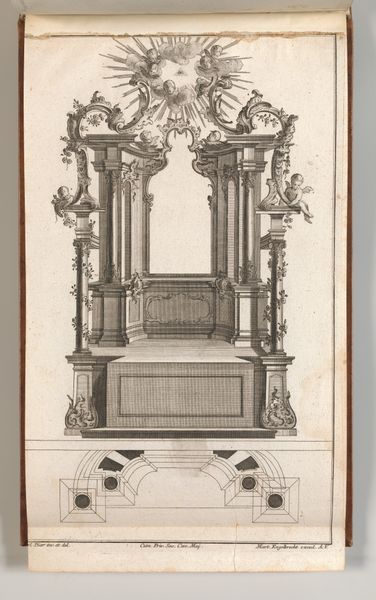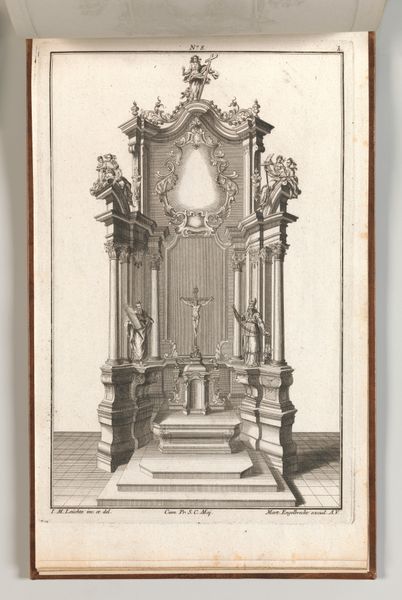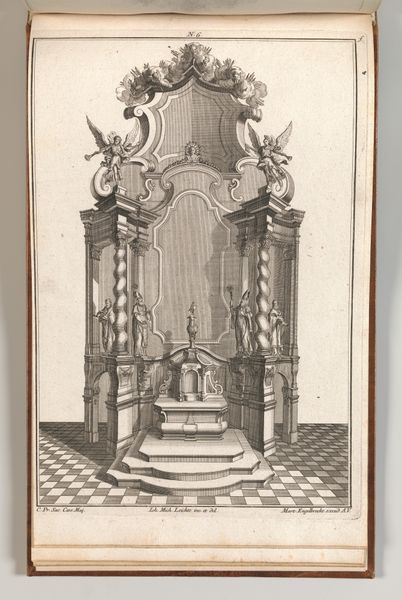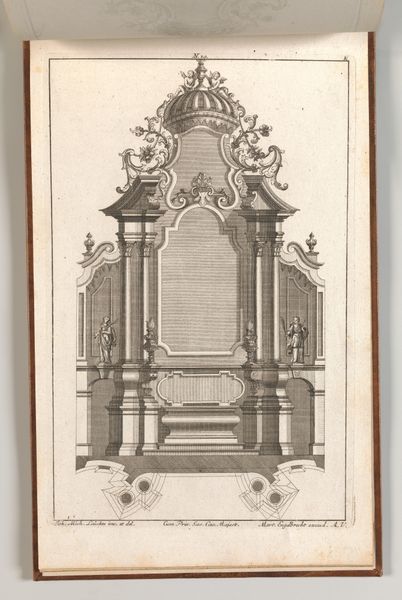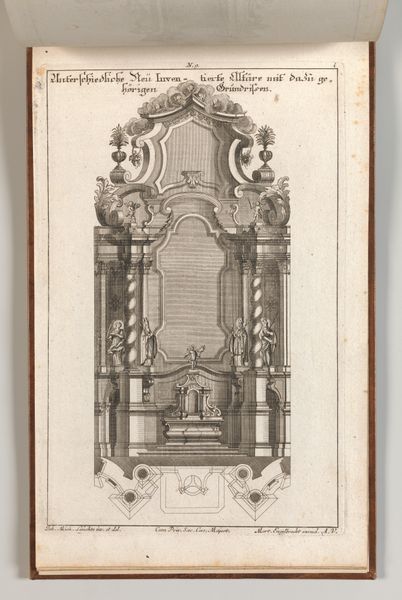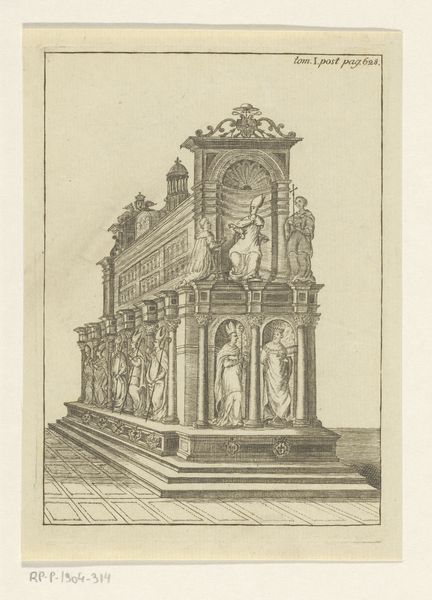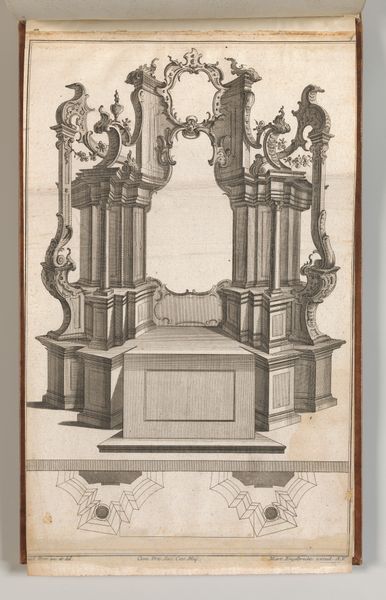
Design for a Monumental Altar, Plate g from 'Unterschiedliche Neu Inventierte Altäre mit darzu gehörigen Profillen u. Grundrißen.' 1745 - 1755
0:00
0:00
drawing, ornament, print, engraving, architecture
#
drawing
#
aged paper
#
ornament
#
toned paper
#
light pencil work
#
baroque
# print
#
old engraving style
#
geometric
#
engraving
#
architecture
Dimensions: Overall: 8 7/16 × 13 3/4 in. (21.5 × 35 cm)
Copyright: Public Domain
Editor: This engraving from sometime between 1745 and 1755 by Johann Michael Leüchte presents a baroque altar design. It looks incredibly intricate; all the different textures and shapes create a sense of dramatic grandeur. How does its architectural design reflect its intended function? Curator: Well, consider that the Baroque period witnessed significant shifts in religious and political power. The Church, particularly, sought to reassert its influence, and art became a key tool. This altar design, with its dramatic flourishes and monumental scale, served as a visual spectacle to inspire awe and devotion, reaffirming religious authority. Note the abundant ornamentation. Editor: So, the detail and grandiosity is a purposeful statement of power? Curator: Precisely. Furthermore, altar designs like this often responded to, or even challenged, existing artistic traditions and patronage systems. Who commissioned such works and for what specific spaces were key factors. Was it for a prominent cathedral, or a smaller parish church? This context shapes its intended audience and therefore, its artistic language. Editor: That makes a lot of sense. It’s almost like the design itself participates in the ongoing religious discourse of the time. Curator: Indeed. And it also provides insights into the role of art and architecture in shaping social beliefs and experiences within a particular historical and cultural landscape. We can really see how art functioned in public life. Any thoughts? Editor: I'd never thought about engravings as political objects before. It reframes how I view this, seeing it more about power dynamics than faith, maybe. Curator: Exactly! Viewing art through its social and institutional context opens up rich new perspectives.
Comments
No comments
Be the first to comment and join the conversation on the ultimate creative platform.
